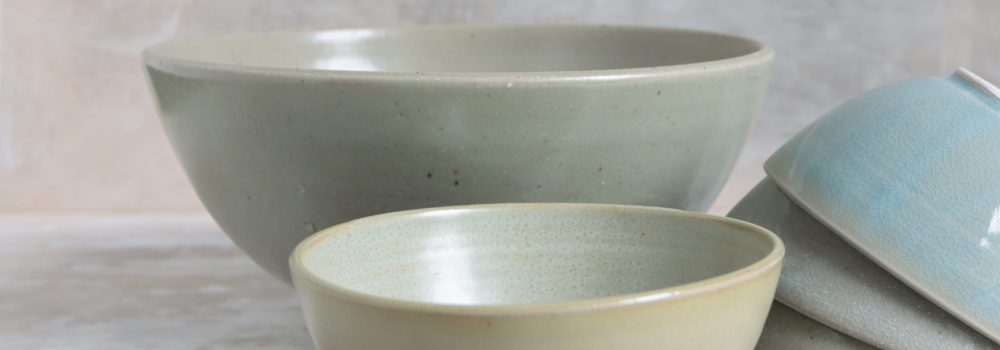

Since 1994 I do enjoy making tableware and vases with different celadon glazes according to my own recipe: made on the potter’s wheel, basic and functionally designed in which the different clays form a connection with the special Celadon glazes.
Celadon glazes are famous Chinese glazes and were developed in China between 960 and 1279 during the Sung period. The story goes that the name of Celadon was derived from an Egyptian prince “Salah-ed-Din”, who in 1170 would have given the Sultan of Damascus greenish glazed porcelain with the appearance of jade. Later other Southeast Asian countries adopted this glazing technique, including Japan and Korea, where the most beautiful Celadon come from.
Celadon has now become a designation for a color. The real Celadon is reduced stoneware, fired in a gas or wood kiln. During the firing process, oxygen is extracted from the ferrous Celadon glaze with any “impurities” in the clay (iron particles, pyrite, plant residues, etc.). The degree of reduction, the amount of iron in the glaze, the composition of the glaze and the type of clay together create the beautiful, lively color nuances: warm natural / gray / green and tar blue / turquoise tones. Enhanced by a crackle and / or beautiful “freckles”, Celadon is timelessly beautiful and gives my ceramics a depth and authenticity that goes far beyond a color “on it”.
On the left the bowls with the celadon glaze and the color of iron before firing and on the right the bowls after the reduction firing. Always a joy to unload the oven, pure magic what happens during the firing! All shades of celadon go together beautifully; collect them and create a landscape of all shades that reinforce each other, such as the green nuances in the garden and the shades of blue in the sky.
Celadon has stolen my heart!
Information
Visit my shop
Schellingwouderdijk 243
1023 NG Amsterdam
020 – 490 49 36
KvK: 34353534
Open on Saturday and Sunday
11am to 5pm and by appointment
@ Keramiek Atelier Marjoke de Heer